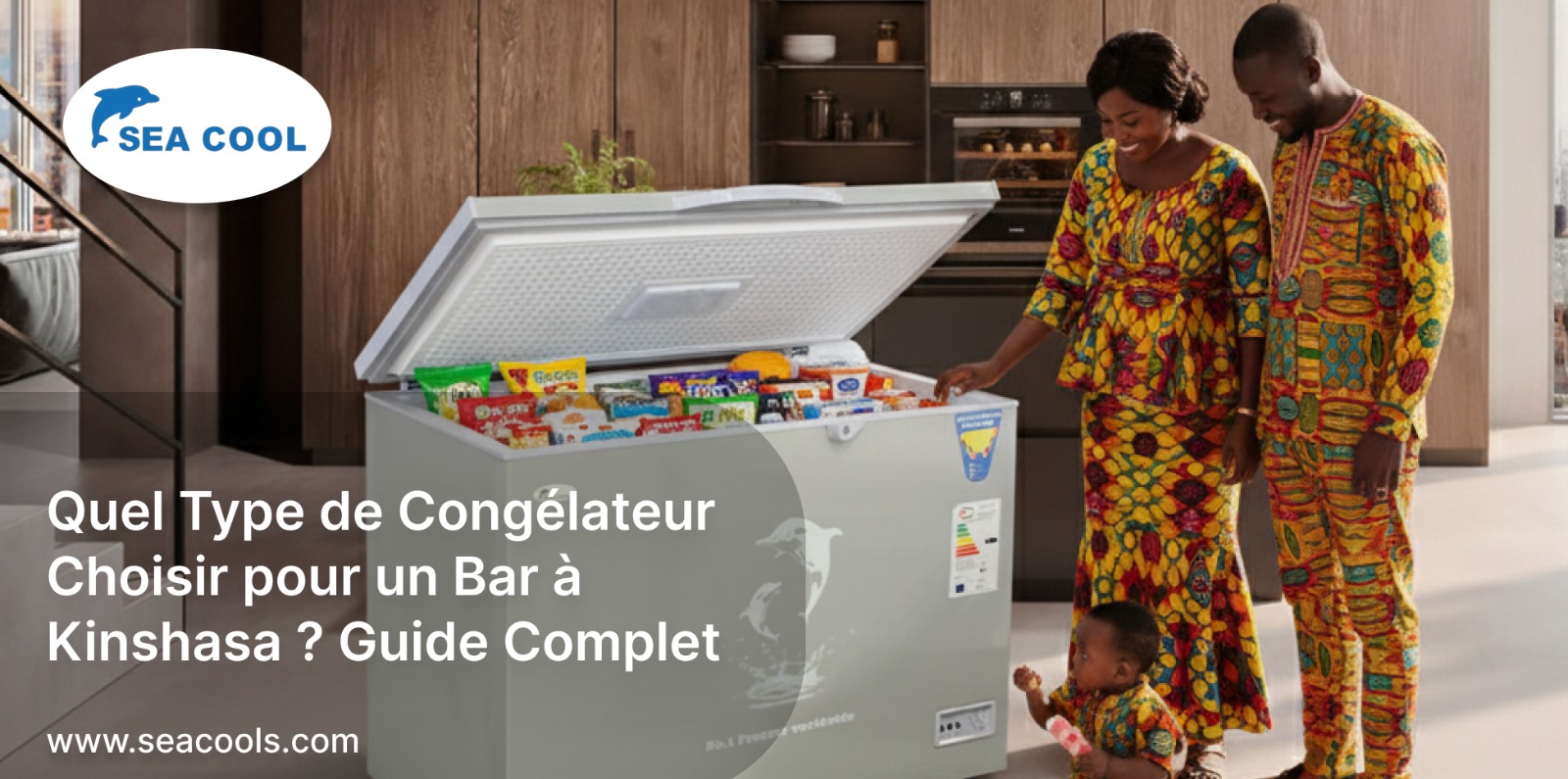What Type of Freezer to Choose for a Bar in Kinshasa? Complete Guide
Opening or managing a bar in Kinshasa involves juggling countless details, one of which is choosing the right freezer. Did you know that an ill-suited appliance can lead to product losses and eat into your profits with a hefty electricity bill? In this guide, I’ll walk you through, step by step, how to select the ideal freezer for your bar in Kinshasa (or elsewhere in the DRC), taking into account the realities of the climate, power grid, and operational needs.

Opening or managing a bar in Kinshasa involves juggling countless details, one of which is choosing the right freezer. Did you know that an ill-suited appliance can lead to product losses and eat into your profits with a hefty electricity bill? In this guide, I’ll walk you through, step by step, how to select the ideal freezer for your bar in Kinshasa (or elsewhere in the DRC), taking into account the realities of the climate, power grid, and operational needs.
1. The Kinshasa Context: Why It Matters
In Kinshasa, high temperatures year-round put significant strain on freezers, requiring them to function in challenging conditions. Add to that frequent power outages, and you need a device that maintains stable temperatures even during interruptions. For a bar, the goal is typically to store:
- Ice cubes or ice packs,
- Chilled packs (beers, sodas),
- Some frozen products (pre-made cocktails, fruits, ingredients). Thus, your freezer must balance adequate capacity, energy efficiency, heat resistance, and durability.
2. Key Criteria to Consider
📦 Appropriate Capacity A model too small will leave you short during busy periods; an oversized one wastes energy. For a medium-sized bar, aim for a freezer between 120 and 200 liters.
🌡 Climate Class / Tropicalization Look for models labeled SN / N / ST / T—or explicitly “tropicalized”—designed to handle high ambient temperatures without overheating.
🧊 Chest (Horizontal) vs. Upright (Vertical) Chest freezers often consume less energy since cold air stays at the bottom when opened. Upright models are convenient for access but lose more cold air.
⚙ Compressor, Insulation, & Reliability A robust, efficient compressor and solid insulation are critical, especially with power cuts. Check the quality of the door seal as well.
🔌 Energy Efficiency With electricity costs being a significant factor, opt for a high energy class (A, B, or equivalent) whenever possible.
🛠 Ease of Maintenance & Spare Parts Choose a model that’s easy to clean and defrost, with components (seals, compressors) readily available locally.
🔒 Security A lock or latch can be useful to prevent unauthorized access, especially in a public space.
3. Spotlight on Two Relevant Sea Cool Models
To make things concrete, let’s look at two Sea Cool models that could suit a bar in Kinshasa:
Sea Cool Freezer 195 Litres
- Capacity: 195 liters
- Format: Chest (horizontal lid)
- Strengths: Reinforced insulation, compressor suited for hot climates, locking option
- Recommended Use: Medium to large bars, larger storage needs (ice, pre-made products, packs)
Sea Cool Freezer 150 Litres
- Capacity: Smaller, more compact
- Ideal for: Bars with limited space or as a secondary storage unit
- Benefits: Lower energy consumption while maintaining adequate capacity
These two models illustrate the range of options: one for higher capacity, the other for compactness.
4. Quick Comparison & Recommendations
- If you have ample space and high storage needs, the 195-liter model offers more flexibility for stock expansion.
- For a small bar or limited space, the 150-liter model may suffice, provided you organize the contents efficiently.
- In both cases, prioritize a chest freezer to minimize thermal loss when opening.
- Ensure the supplier (Sea Cool or a local retailer) can provide spare parts in Kinshasa.
- Factor in consumption costs, as a freezer runs 24/7; include this in your bar’s overall electricity budget.
5. Tips to Maximize Performance
- Keep your freezer regularly filled: A fuller freezer loses less cold air.
- Organize products logically to minimize door-open time.
- Defrost periodically to prevent thick ice buildup.
- Check and clean seals and internal surfaces regularly.
- During a power outage: Close the lid immediately and avoid unnecessary openings.
Conclusion
Choosing the right freezer for a bar in Kinshasa or the DRC is not a trivial decision—it’s a strategic part of your setup. You need to balance capacity, heat resilience, energy efficiency, and ease of maintenance. The Sea Cool 195-liter and 150-liter models are strong examples tailored to your space and budget constraints. With the criteria and tips shared here, you can make an informed, long-lasting choice for your bar.
If you’d like, I can help compare Sea Cool with other brands available in Kinshasa or estimate annual consumption costs—would that interest you?
